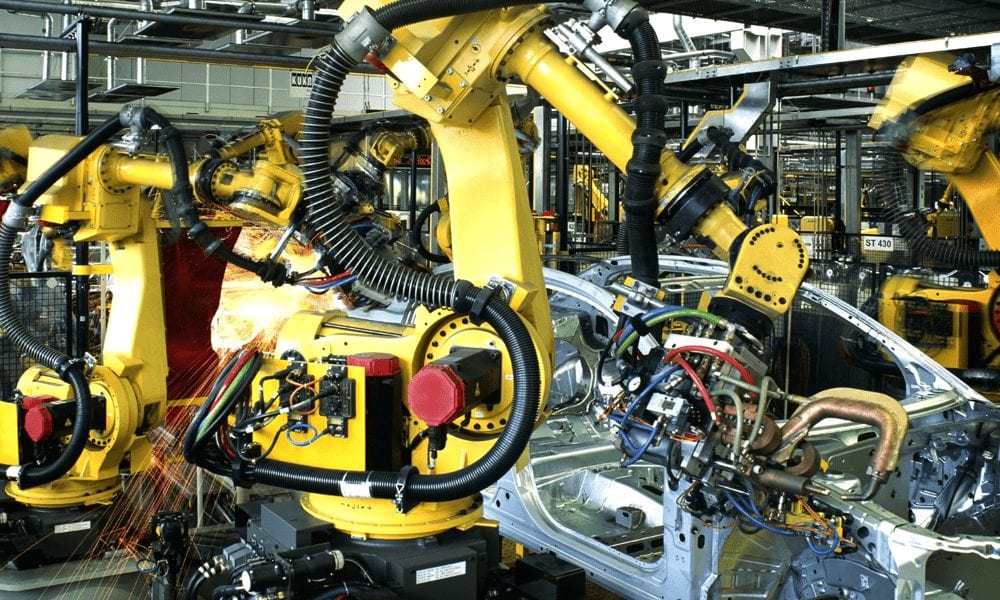
Earlier this year, OpenText™ became a member of the Manufacturing Leadership Council, the highly influential leadership network for senior executives in the manufacturing industry. Recently, the organization outlined some of the market trends it saw affecting the industry this year. I thought I’d share some of them with you.
Manufacturing has seen some challenging times over the last decade but, in the US at least, there is a growing sense of optimism. In fact, The National Association of Manufacturers (NAM) ‘Manufacturers’ Outlook Survey’ found that 2018 was the best year ever for manufacturers’ optimism – and this looks set to continue through 2019. The Manufacturers Leadership Council noted that senior executive confidence currently stands at 92.5 percent. How will this translate into market trends over the year ahead?
The economy is buoyant, but caution is needed
According to the UN, the global economy is set to grow at 3 percent with the US economy performing just below this at 2.9 percent over the last quarter. Research from NAM suggests that this rate will slow but not decline through 2019. Manufacturing production in the US has shown resilient growth in 2018 but this is likely also to slow in 2019 due to skills shortages and the high cost or raw materials. In addition, manufacturing capacity utilization remains quite low – still below 2008 levels – which may make some manufacturers reticent about new investment with under-utilization and uncertain demand. However, as the following market trends from the Manufacturers’ Leadership Council demonstrate, it is essential that companies maintain their investments in digital technologies.
Skills shortage is a growing challenge
Towards the end of 2018, over 24,000 new manufacturing jobs were being created in the US every month. When asked, senior executives placed finding and retaining staff as their primary business challenge. In fact, the scale of the skills challenge is enormous. The Manufacturing Institute estimates that, by 2025, there will be 2.4 million unfilled jobs in manufacturing. To put that in perspective, the figure represents more than half the total amount of manufacturing positions.
To cope with the skills shortage, the most common strategy currently is to work the existing workforce more. It should be clear that this strategy can’t go on forever without adversely affecting production and morale – and that even the best recruitment strategy is not going to overcome the skills shortfall. In 2019, manufacturers must find ways to automate more and more of the business and operational processes – which leads us to…
Industry 4.0 adoption continues to rise in 2019
The idea of Industry 4.0 has been around for some time and it is beginning to find widespread adoption. We are beginning to see a greater integration between information technology (IT) and operational technology (OT). The Manufacturing Leadership Council’s market trends pointed to the Outlook survey that showed manufacturers have been working hard towards this and it expects investments to increase over the next 12 months. We can expect to see digital technologies merging more with the physical infrastructure. Organizations will continue to undergo digital transformation and increasingly exploit the data and insights from the integration of IT and OT to drive their business.
Look out for these transformative technologies
The Manufacturers Leadership Council identified a number of transformative technologies that will underpin the drive towards Industry 4.0 in 2019. Key amongst them were the increased importance of the Internet of Things (IoT) in the production and supply chain processes as well as the adoption of AI and machine learning in everything from production line output to prescriptive maintenance to customer lifecycle experience.
For me, one interesting area of development was the increase use of the digital twin. Manufacturing has seen digital twins become more popular as a means to monitor and control assets within the production process. Now digital twins are allowing information to flow more easily through the entire product lifecycle from upstream stages like initial development to downstream stages such as after-sales servicing and maintenance.
The development of the ‘Smart Factory’
Another market trend that the Manufacturers Leadership Council talked about is Manufacturing 4.0. For me, this takes the digital technologies that underpin Industry 4.0 and apply them to create the smart factory of the future. These include advanced manufacturing systems, extensive IoT deployments and AI for fully automated production processes. The major issue is how to properly address the deluge of data and content required to effectively manage the ‘smart factory’. In my opinion, this places the focus firmly on Enterprise Information Management (EIM) as a means to ensure information is properly captured, manipulated, managed and made available where needed. You can read more about delivering intelligent and connected manufacturing in this IDC Infobrief.
A focus on the supply chain
The final market trend I’d like to mention is the move from the traditional model for supply chains to creating a digital supply network for manufacturing. An intelligent and connected supply chain is quickly becoming the foundation that manufacturers can use to work more collaboratively with suppliers and customers to boost business efficiency and deliver improved product and service innovation. Creating an effective enterprise supply chain network is an important part of fully embracing the potential of Industry 4.0 and I am very proud to say that it’s an area where IDC recently recognized OpenText as a market leader.
Find out more about the range of solutions and services that OpenText delivers to the intelligent and connected manufacturing enterprise.



